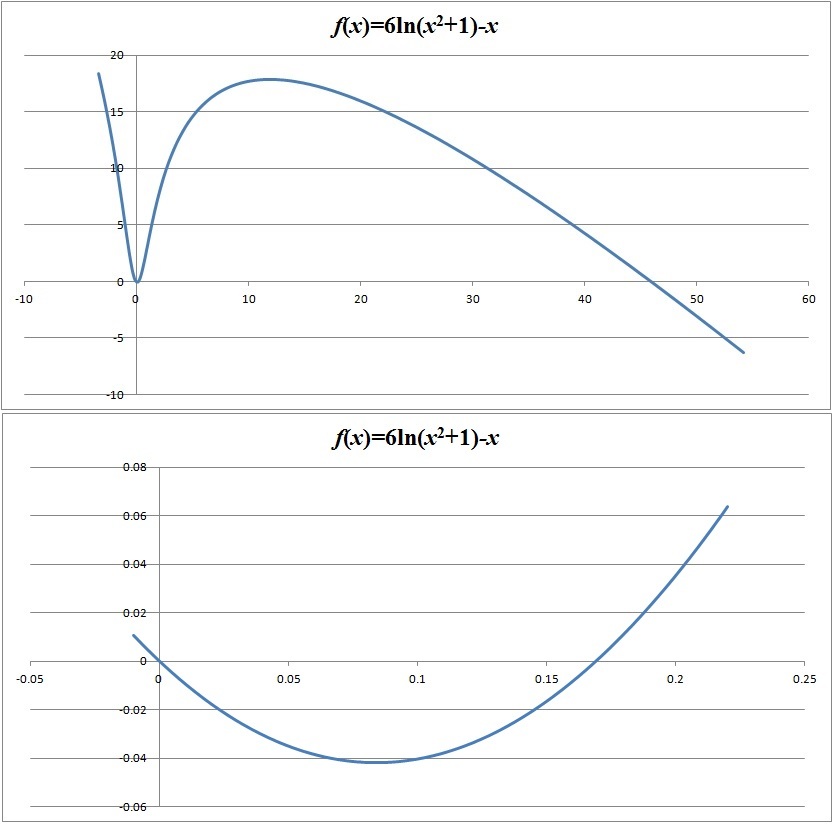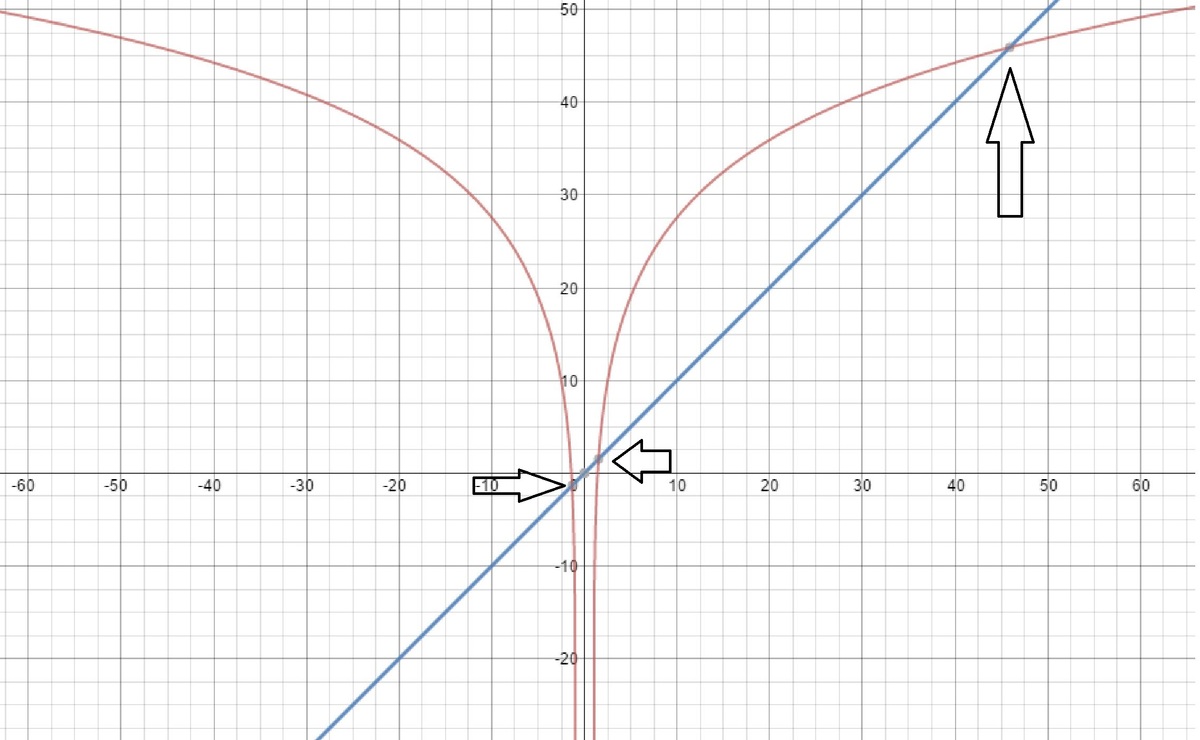Can you draw its graph-7?
Calculus
Level
2
How many real solutions exist for the equation above?
3
More than 3.
1
2
0
This section requires Javascript.
You are seeing this because something didn't load right. We suggest you, (a) try
refreshing the page, (b) enabling javascript if it is disabled on your browser and,
finally, (c)
loading the
non-javascript version of this page
. We're sorry about the hassle.


I know solving this problem by graphing is easy, but I'm posting a calculus-based approach anyway.
Let f ( x ) = 6 ln ( x 2 + 1 ) − x . I don't know what the author means by using the notation lo g , so I just assume it's natural logarithm.
Then f ′ ( x ) = x 2 + 1 1 2 x − 1
f ′ ( x ) = 0 ⇔ 1 2 x = x 2 + 1 ⇔ x = 6 ± 3 5 .
It is obvious that f ′ ( x ) < 0 , ∀ x ∈ ( − ∞ , 6 − 3 5 ) so f ( x ) is strictly decreasing in this interval.
In the same way, it can be concluded that f ( x ) is strictly increasing in ( 6 − 3 5 , 6 + 3 5 ) , and strictly decreasing again in ( 6 + 3 5 , + ∞ ) .
Notice that, if f ( x ) is continuous in the closed interval [ a , b ] and f ( a ) f ( b ) < 0 , then there exists some x 0 in this interval which is a root of f ( x ) . Moreover, if f ( x ) is strictly monotonous in this interval, then x 0 is the only root of f ( x ) in [ a , b ]
f ( − 1 ) > 0 and f ( 6 − 3 5 ) < 0 , then f ( x ) must cross the x-axis exactly once in the interval ( − 1 , 6 − 3 5 ) , hence there is one root in this interval (Yes, it's x = 0 !).
Apply the same logic for the two remaining intervals, we can prove that the equation has 3 roots.